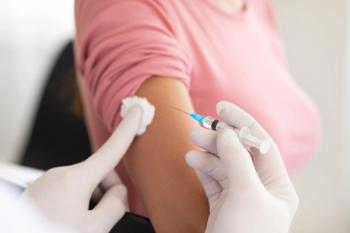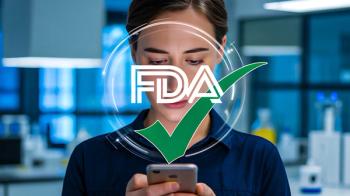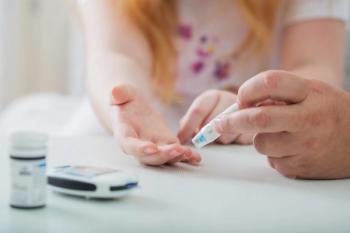
- October 2015 Diabetes
- Volume 81
- Issue 10
Diabetes: Disease-Modifying Therapies
The number of Americans with diabetes rose from 5.6 million in 1980 to 21 million in 2014, with an additional 8.1 million individuals still undiagnosed.
The number of Americans with diabetes rose from 5.6 million in 1980 to 21 million in 2014, with an additional 8.1 million individuals still undiagnosed.1,2 As of 2011 in the United States, 11.8 million patients were taking only oral medications for their diabetes, 2.9 million were using insulin only, and an additional 2.9 million were using a combination of the two.3 The Centers for Disease Control and Prevention listed diabetes as the seventh leading cause of death in the United States in 2013, with 75,578 deaths.4 This national epidemic resulted in a financial burden of approximately $245 billion in 2012.5
Coexisting conditions and complications (eg, hypoglycemia, hyperglycemic crisis, hypertension, hyperlipidemia, diabetic retinopathy, nephropathy, diabetic neuropathy, amputation) are all too common among patients who have diabetes. Other conditions associated with diabetes include nonalcoholic fatty liver disease, periodontal disease, hearing loss, depression, erectile dysfunction, and pregnancy complications.
The goal of therapy is to maintain a normal blood glucose level and reduce cardiovascular risk factors. Although patients with type 1 diabetes (T1D) require exogenous insulin provided either by inhalation, injection, or infusion through an insulin pump, patients with type 2 diabetes (T2D) can control their blood glucose levels with healthy eating habits, regular exercise, and medications. A plethora of agents are available to treat diabetes. Here is a brief summary of each class. For dosing information, please see Online Table 1.
Table 1: Dosing of Agents for Treating Diabetes
Class/Drug Name
Available Strengths
Daily Therapeutic Dose
Special Requirements
Biguanides
Metformin
Metformin ER
500 mg (also ER)
750 mg (also ER)
850 mg
1000 mg (also ER)
500 mg/5 mL
500-2000 mg/day
Max dose: 2550 mg
Divide doses
Take with food
Sulfonylureas
Glyburide
Standard: 1.25, 2.5, and 5 mg
Micronized:
1.5, 3, 4.5, and 6 mg
Standard: 2.5-20 mg
Micronized: 0.75-12 mg
Max dose:
Standard: 20 mg
Micronized: 12 mg
With breakfast
Glipizide
Standard: 2.5, 5, or 10 mg
Extended-release: 5 and 10 mg
Standard: 2.5-20 mg
Max single dose: 15 mg
Max daily dose: 40 mg
Max daily dose (ER): 20 mg
30 minutes before meals
Glimepiride
1, 2, and 4 mg
1-4 mg
Max daily dose: 8 mg
With first main meal of the day
Meglitinide Derivatives
Repaglinide
0.5, 1, and 2 mg tablets
0.5-2 mg
Within 15 minutes of every meal
Nateglinide
60 and 120 mg
180-360 mg
Before meals
Alpha-Glucosidase Inhibitors
Acarbose
25, 50, and 100 mg
75-300 mg
Max weight <60 kg: 150 mg
Max weight >60 kg: 300 mg
With first bit of each main meal (3 times per day)
Miglitol
25, 50, and 100 mg
75-300 mg
Max: 300 mg
With first bite of each main meal (3 times per day)
Thiazolidinediones
Pioglitazone
15, 30, and 45 mg
15-45 mg
Max: 45 mg
With or without food
Rosiglitazone
2, 4, and 8 mg
4-8 mg
Max: 8 mg
With or without food
Glucagon-like Peptide-1 Agonists
Exenatide
5 mcg/0.02 mL and 10 mcg/0.04 mL
10-20 mcg
Max single dose: 10 mcg
Inject subcutaneously up to 60 minutes before meals (twice a day)
Do not inject after meals
Liraglutide
18 mg/3 mL
0.6-1.8 mg
Inject subcutaneously once daily without regard to meals
Albiglutide
30 mg and 50 mg
30-50 mg
Inject subcutaneously once weekly
Dulaglutide
0.75 mg/0.5 mL
1.5 mg/0.5 mL
0.75-1.5 mg
Inject subcutaneously once weekly
Dipeptidyl Peptidase IV Inhibitors
Sitagliptin
25, 50, and 100 mg
100 mg
Swallow whole with or without food
Saxagliptin
2.5 and 5 mg
2.5-5 mg
With or without food
Linagliptin
5 mg
5 mg
With or without food
Alogliptin
6.25, 12.5, and 25 mg
25 mg
With or without food
Amylinomimetics
Pramlintide
600 and 1000 mcg/mL
45 mcg
Inject subcutaneously immediately before each major meal
Selective Sodium-Glucose Transporter-2 Inhibitors
Canagliflozin
100 mg
100-300 mg
Swallow whole before first meal of the day
Dapagliflozin
5 and 10 mg
5-10 mg
Take in morning with or without food
Empagliflozin
10 and 25 mg
10-25 mg
In the morning with or without food
Bile Acid Sequestrants
Colesevelam
625, 1875, and 3750 mg
3750 mg
Single or 2 divided doses; separate from administration of other medications
Dopamine-2 Agonists
Bromocriptine mesylate
0.8-mg tablet
0.8-4.8 mg
Within 2 hours of waking with food
ER = extended release.
Insulins
Many forms of insulin are available to treat patients who have T1D or T2D. These insulins are grouped according to time to onset and duration of action.6 Physicians will prescribe based on a number of factors, including patient response, lifestyle choices, number of injections a patient can handle, blood glucose monitoring, age, and goals. See Online Table 26 for a list of available agents. Dosing is done on an individual basis, often using a sliding scale based on the amount of carbohydrates consumed.
Table 2: Insulins6
Type of Insulin and Brand Names
Onset (minutes)
Peak
Duration
Typical Schedule
Rapid-Acting
Lispro (Humalog)
15-30
30-90 minutes
3-5 hours
15 minutes before meal time
Aspart (NovoLog)
10-20
40-50 minutes
3-5 hours
Glulisine (Apidra)
20-30
30-90 minutes
1-1.5 hours
Short-Acting
Regular (humulin or novolin)
30-60
2-5 hours
5-8 hours
30-60 minutes before a meal
Velosulin (for use in pump)
30-60
2-3 hours
2-3 hours
Intermediate-Acting
Neutral protamine hagedorn (NPH)
60-120
4-12 hours
18-24 hours
Up to 60 minutes before a meal
Long-Acting
Glargine (Lantus)
60-90
No peak; continual
20-24 hours
Detemir (Levemir)
60-120
6-8 hours
Up to 24 hours
Pre-Mixed: Combination Intermediate- and Short-Acting Insulins
Humulin 70/30
30
2-4 hours
14-24 hours
Two to 3 times daily before meal time
Novolin 70/30
30
2-12 hours
Up to 24 hours
NovoLog 70/30
10-20
1-4 hours
Up to 24 hours
Humulin 50/50
30
2-5 hours
18-24 hours
Humalog mix 75/25
15
30-150 minutes
16-20 hours
Inhaled
Afrezza
12-15
30 minutes
3 hours
Biguanides
The only available biguanide in the United States is metformin, which is considered first-line therapy for T2D. Although the mechanism of action is not clearly understood, biguanides primarily reduce blood glucose levels by decreasing hepatic gluconeogenesis and secondarily increasing peripheral insulin sensitivity.7 Metformin does not increase body weight, has a low incidence of hypoglycemia, and may reduce cardiovascular risk, cancer, and mortality.7 Adverse effects (AEs) include diarrhea, abdominal cramping, and vitamin B12 deficiency.
Sulfonylureas
Sulfonylureas (glyburide, glipizide, glimepiride) are used as monotherapy or in combination with other hypoglycemic agents or insulin. Sulfonylurea drugs stimulate insulin secretion from the pancreatic beta-cells by closing the ATP-sensitive K+-channels in the betacell plasma membrane. This depolarization opens up Ca2+-channels, resulting in increased fusion of insulin granulae and release of pro-insulin.8 Some sulfonylureas are metabolized by the liver and also induce the CYP450 system; therefore, some drug interactions may be anticipated. Possible AEs include weight gain and hypoglycemia.
Meglitinide Derivatives
Meglitinides derivatives (repaglinide, nateglinide) stimulate insulin secretion from the pancreatic beta-cells by closing the ATP-sensitive K+-channels in the beta-cell plasma membrane. They seem to cause less weight gain and hypoglycemia.9
Alpha-Glucosidase Inhibitors
Alpha-glucosidase inhibitors (acarbose, miglitol) inhibit intestinal alpha-glucosidase, thereby slowing intestinal carbohydrate digestion and absorption. Because these drugs do not cause the pancreas to increase insulin production, hypoglycemia is not an issue. Flatulence and diarrhea are the most common AEs.
Thiazolidinediones
Thiazolidinediones (TZDs) (pioglitazone, rosiglitazone) increase insulin sensitivity by activating the nuclear transcription factor peroxisome proliferatoractivated receptor (PPAR-gamma). This activation alters gene transcription of several components involved in glucose and lipid metabolism.10 TZDs have positive effects on high-density lipoprotein cholesterol and triglycerides, and produce no hypoglycemia. Common AEs include weight gain, edema, heart failure, bone fractures, and negative effects on low-density lipoprotein cholesterol (LDL-C).
Glucagon-like Peptide-1 Agonists
Glucagon-like peptide-1 (GLP-1), considered an incretin, is released from the gut in response to ingestion of nutrients. This peptide affects gut motility and inhibits gastric acid and glucagon secretion. In the pancreas, GLP-1 induces expansion of insulin-secreting beta-cell mass and augments glucose-stimulated insulin secretion through manipulation of ion channels—such as K+ ATP, voltagedependent Ca2+, and K+ channels—and nonselective cation channels, as well as by the regulation of intracellular energy homeostasis and exocytosis.11
GLP-1 agonists (exenatide, liraglutide, albiglutide, dulaglutide) do not cause hypoglycemia; their major benefits include weight loss and reduction of some cardiovascular risk factors. Available only as injectables, GLP-1 agents require administration training. Common AEs include nausea, vomiting, diarrhea, and increased heart rate.
Dipeptidyl Peptidase IV (DPP-4) Inhibitors
DPP-4 inhibitors (sitagliptin, saxagliptin, linagliptin, alogliptin) inhibit the degradation of the incretins such as GLP-1 and glucose-dependent insulinotropic peptide. Therefore, DPP-4 inhibitors are considered to be comparable to GLP-1 therapies in terms of mechanism of action and AEs; however, these drugs are administered orally.12
Amylinomimetics
Human amylin is co-located and cosecreted with insulin by the pancreas. In patients who have T1D or T2D, there is a reduction in these secretions from the pancreatic beta-cells in response to nutrient ingestion. Amylin slows gastric emptying without altering the overall absorption of nutrients and suppresses glucagon secretion, thereby suppressing endogenous glucose output from the liver. Amylinomimetics (pramlintide) have a positive effect on body weight. The most notable AEs include nausea, vomiting, and hypoglycemia. Available only as an injectable, this agent requires administration training and has a frequent dosing schedule.
Selective Sodium-Glucose Transporter-2 Inhibitors
Selective sodium-glucose transporter-2 (SGLT-2) inhibitors (canagliflozin, dapagliflozin, empagliflozin) are located in the S1 and S2 segments of the proximal convoluted tubules of the kidneys and have a high capacity for glucose transport, reabsorbing approximately 90% of filtered glucose in healthy individuals. SGLT-2 inhibitors reduce that reabsorption, resulting in increased urinary excretion of glucose and lower blood glucose levels. SGLT-2 inhibitors work independently of insulin; therefore, they do not create hypoglycemia. The most common AEs are genital mycotic infections in males and females, as well as urinary tract issues such as frequent urination and urinary tract infections. Hypotensive episodes and acute deterioration of kidney function have also been observed.
Bile Acid Sequestrants
The exact mechanism by which bile acid sequestrants (BASs) (colesevelam) exhibit glycemic regulation remains unexplained. However, they may affect the secretion of incretin hormones such as GLP-1 and GIP, as well as reduce hepatic glucose production. Hypoglycemia is not an issue, and BASs have positive effects on LDL-C. Administration should be separate from other medications, as BASs can decrease absorption of these medications. Constipation, upset stomach, and diarrhea are common AEs. Colesevelam may increase triglyceride levels.
Dopamine-2 Agonists
The mechanism of action of dopamine-2 agonist bromocriptine mesylate has not yet been elucidated; however, it is unique in that it does not have a specific receptor mediating its action on glucose metabolism. Instead it works in the central nervous system by resetting dopaminergic and sympathetic tones. Notable AEs include nausea, fatigue, dizziness, syncope, and rhinitis.
Conclusion
Pharmacists are in a unique position to contribute to medication selection based on the combined dynamics of the patient, disease progression, medical history, comorbidities, and other factors. Understanding the mechanism of action and AE profile of each class of these medications can help determine the appropriate choice.
Dr. Kenny earned her doctoral degree from the University of Colorado Health Sciences Center. She has 20-plus years’ experience as a community pharmacist and works as a clinical medical writer based out of Colorado Springs, Colorado. Dr. Kenny is also the Colorado education director for the Rocky Mountain Chapter of the American Medical Writer’s Association.
References
- Number (in millions) of civilian, noninstitutionalized persons with diagnosed diabetes, United States, 1980-2011. Centers for Disease Control and Prevention website. www.cdc.gov/diabetes/statistics/prev/national/figpersons.htm. Updated March 28, 2013. Accessed August 9, 2015.
- 2014 national diabetes statistics report. Centers for Disease Control and Prevention website. www.cdc.gov/diabetes/data/statistics/2014StatisticsReport.html. Updated May 15, 2015. Accessed August 9, 2015.
- Data and statistics. Centers for Disease Control and Prevention website. www.cdc.gov/diabetes/statistics/. Accessed August 9, 2015.
- Deaths and mortality. Centers for Disease Control and Prevention website. www.cdc.gov/nchs/fastats/deaths.htm. Updated February 6, 2015. Accessed August 9, 2015.
- National diabetes statistics report, 2014: estimates of diabetes and its burden in the United States. Centers for Disease Control and Prevention website. www.cdc.gov/diabetes/pdfs/data/2014-report-estimates-of-diabetes-and-its-burden-in-the-united-states.pdf. Accessed August 9, 2015.
- Types of insulin for diabetes treatment. WebMD website. www.webmd.com/diabetes/guide/diabetes-types-insulin. Accessed August 11, 2015.
- Type 2 diabetes mellitus medication. MedScape website. http://emedicine.medscape.com/article/117853-medication. Accessed August 1, 2015.
- Rena G, Pearson E, Sakamoto K. Molecular mechanism of action metformin: old or new insights? Diabetologia. 2013;56(9):1898-1906. doi: 10.1007/s00125-013-2991-0.
- Healthwise staff. Meglitinides for Type 2 Diabetes. WebMD website. www.webmd.com/diabetes/meglitinides-for-type-2-diabetes. Updated November 14, 2014. Accessed August 8, 2015.
- Hauner H. The mode of action of thiazolidinediones. Diabetes Metab Res Rev. 2002;18(suppl 2):S10-S15.
- Macdonald P, El-kholy W, Riedel MJ, et al. The multiple actions of GLP-1 on the process of glucose-stimulated insulin secretion. Diabetes. 2002;51(suppl 3):S434-S442.
- Thornberry NA, Gallwitz B. Mechanism of action of inhibitors of dipeptidyl-peptidase-4 (DPP-4). Best Pract Res Clin Endocrinol Metab. 2009;23(4):479-486. doi: 10.1016/j.beem.2009.03.004.
Articles in this issue
about 10 years ago
Pain-Derived Brain Inflammation Associated with Depressionabout 10 years ago
Bullied Teens at Higher Risk of Developing Adulthood Depressionabout 10 years ago
Antibiotic Use May Predict Diabetesabout 10 years ago
Heart Failure Patients With Depression Face Elevated Mortality Riskabout 10 years ago
Surgery Better Than Medication Therapy for Long-Term Diabetes Controlabout 10 years ago
Diabetes Treatment Aids Weight Loss in Patients with Diabetesabout 10 years ago
Fulfilling a Pharmacist's Social Responsibilitiesabout 10 years ago
Identifying Your Strengths: Drill Down to SpecificsNewsletter
Stay informed on drug updates, treatment guidelines, and pharmacy practice trends—subscribe to Pharmacy Times for weekly clinical insights.


















































































































































































































